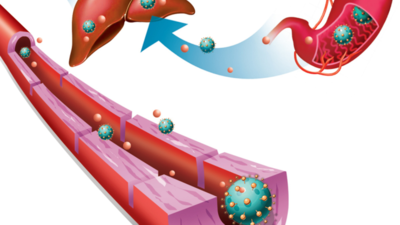Canacona sees rise in cases of foot and mouth disease

Representative Image
CANACONA: Since June, Canacona taluka has been seeing an increasing number of hand, foot, and mouth disease (HFMD) cases among school children. Though the infection is self-limiting and rarely turns severe, doctors said it is highly contagious.
Health officer Canacona community health centre Dr Sneha Amonkar said that the disease, usually caused by the coxsackievirus, is common among children. “Fever and painful rashes on hands, feet and buttocks are some symptoms. It is very contagious and an infected child may pass it to other children in school, even the entire family,” she said.
Amonkar said that though the infection is self-limiting and mostly mild, infected children should not be sent to school for at least a week to prevent transmission.
“Because of the rashes in the oral cavity and throat, some children might find swallowing painful and refuse food. They might need hospital care to prevent dehydration,” she added.
People normally try to treat it at home following utmost care and hygiene.
The virus has an incubation period of three to six weeks.
“Currently we are seeing an increasing number of children with the infection in schools and also among children in surrounding areas who are too young to go to school. But parents need not panic and should consult doctors if symptoms persist,” a consultant paediatrician practicing in the taluka said.
HFMD, caused by coxsackieviruses, usually causes fever, malaise, skin rash, sore throat, and small blisters that ulcerate. The most frequent locations for the blisters/ulcers are on the palms of the hand, soles of the feet, and in the mouth, added the paediatrician.
HFMD usually resolves in about 10 days with no scarring, but the person may shed coxsackievirus for several weeks. “If the fever and irritability persist, consult doctors without delay,” a health inspector said.
Health officer Canacona community health centre Dr Sneha Amonkar said that the disease, usually caused by the coxsackievirus, is common among children. “Fever and painful rashes on hands, feet and buttocks are some symptoms. It is very contagious and an infected child may pass it to other children in school, even the entire family,” she said.
Amonkar said that though the infection is self-limiting and mostly mild, infected children should not be sent to school for at least a week to prevent transmission.
“Because of the rashes in the oral cavity and throat, some children might find swallowing painful and refuse food. They might need hospital care to prevent dehydration,” she added.
People normally try to treat it at home following utmost care and hygiene.
The virus has an incubation period of three to six weeks.
“Currently we are seeing an increasing number of children with the infection in schools and also among children in surrounding areas who are too young to go to school. But parents need not panic and should consult doctors if symptoms persist,” a consultant paediatrician practicing in the taluka said.
HFMD, caused by coxsackieviruses, usually causes fever, malaise, skin rash, sore throat, and small blisters that ulcerate. The most frequent locations for the blisters/ulcers are on the palms of the hand, soles of the feet, and in the mouth, added the paediatrician.
HFMD usually resolves in about 10 days with no scarring, but the person may shed coxsackievirus for several weeks. “If the fever and irritability persist, consult doctors without delay,” a health inspector said.
FOLLOW US ON SOCIAL MEDIA
FacebookTwitterInstagramKOO APPYOUTUBE

Start a Conversation
end of article










